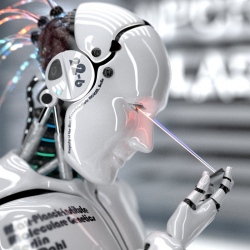
Stochastic computing is one of logic’s little gems. Its advantage is essentially that it makes multiplication as easy as addition.
That’s significant. Imagine adding 0.4397625 and 0.8723489. It’s a calculation you could do in your head in a few seconds. But imagine multiplying those two numbers instead. That’s still something you could do in your head but I bet you’d feel happier reaching for a calculator.
Conventional computers have a similar problem. Adding numbers is straightforward but multiplying them is much more intensive.
Stochastic computers change all this. That’s because they represent numbers using probability: as a stream of bits with a certain probability of being a number.
For example, a bit stream representing 0.25 might contain three 0s for every 1, even though the actual distribution of 0s and 1 is otherwise random.
The big advantage comes from the laws of probability, which turn adding into multiplication: the chances of two events occurring together is equal to their probabilities multiplied. That means stochastic computers can do multiplication with simple AND gates.
Another advantage is that stochastic computers are fantastically robust to noise. Flip a few bits in a stochastic calculation and the chances are that the result will be entirely unaffected.
Of course, there’s a caveat. It’s only possible to ‘read’ a probabilistic number by making lots of measurements. But in certain applications that doesn’t matter. When it works, stochastic computing can be spectacularly successful.
Today, Vincent Canals and pals at the University of the Balearic Islands in Palma off the coast of Spain, reveal a good example.
These guys have applied stochastic computing to the process of pattern recognition. The problem here is to compare an input signal with a reference signal to determine whether they match.
In the real world, of course, input signals are always noisy so a system that can cope with noise has an obvious advantage.
Canals and co use their technique to help an autonomous vehicle navigate its way through a simple environment for which it has an internal map. For this task, it has to measure the distance to the walls around it and work out where it is on the map. It then computes a trajectory taking it to its destination.
These guys say that in several tests, their vehicle calculated the optimal route it needed to take (although they don’t bother with the details about how this was done, which is a potentially significant omission).
